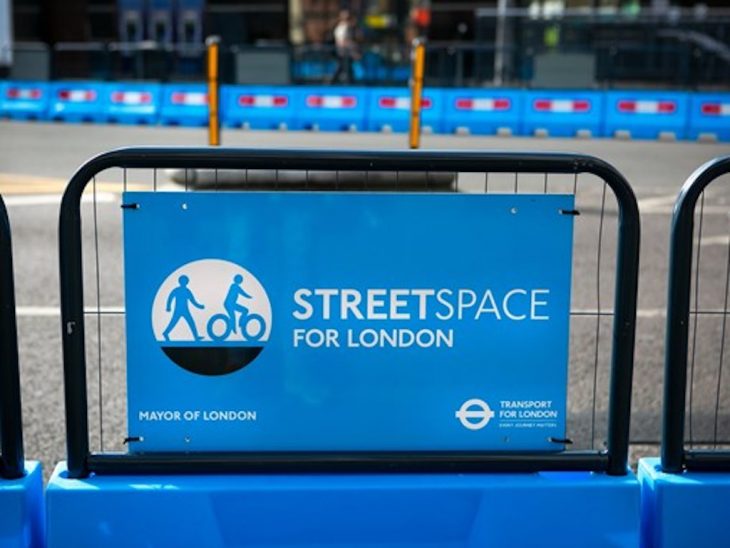Work to create a major new walking, cycling and bus-only corridor in Bishopsgate is starting this week; part of the Streetspace programme to transform streets across the capital.
The work by Transport for London (TfL) will see new traffic restrictions put in place on the A10 between Shoreditch and London Bridge while footways will be widened to provide more space for pedestrians. This will form a key part of the Mayor of London and TfL’s Streetspace plans, which will radically reduce levels of cars in central London to support plans of becoming one of the largest car-free zones in any capital city in the world.
The traffic restrictions on Bishopsgate and Gracechurch Street in the City of London will be in operation on weekdays between 07:00 and 19:00. A number of banned turns, which will be in operation 24 hours a day, are also being to reduce the level of vehicle traffic.
The new zone is set to be operational by the start of August, with further improvements to other central London corridors to follow. Boroughs have been awarded £30m of funding to reallocate road space away from motor traffic and to make walking and cycling safer and easier
The Mayor and TfL have also set out plans to adapt celebrations for Car Free Day in light of coronavirus, including working with boroughs and partners to ask people to share their walking and cycling stories online, highlighting the advantages of car-free travel, while also collaborating with the Open House architecture festival and London Living Streets to promote the cultural benefits of walking and cycling along routes by the capital’s landmarks.
Gareth Powell, TfL’s managing director for surface transport, said: “We’re determined that transport will be at the heart of London’s green, healthy and sustainable recovery from coronavirus. We’re running near normal levels of public transport services and are working hard to deliver extra space for walking and cycling right across the capital. The first walking and cycling priority zone on Bishopsgate will play a central role in enabling people who are returning to work to do so safely and without relying on cars.”











































